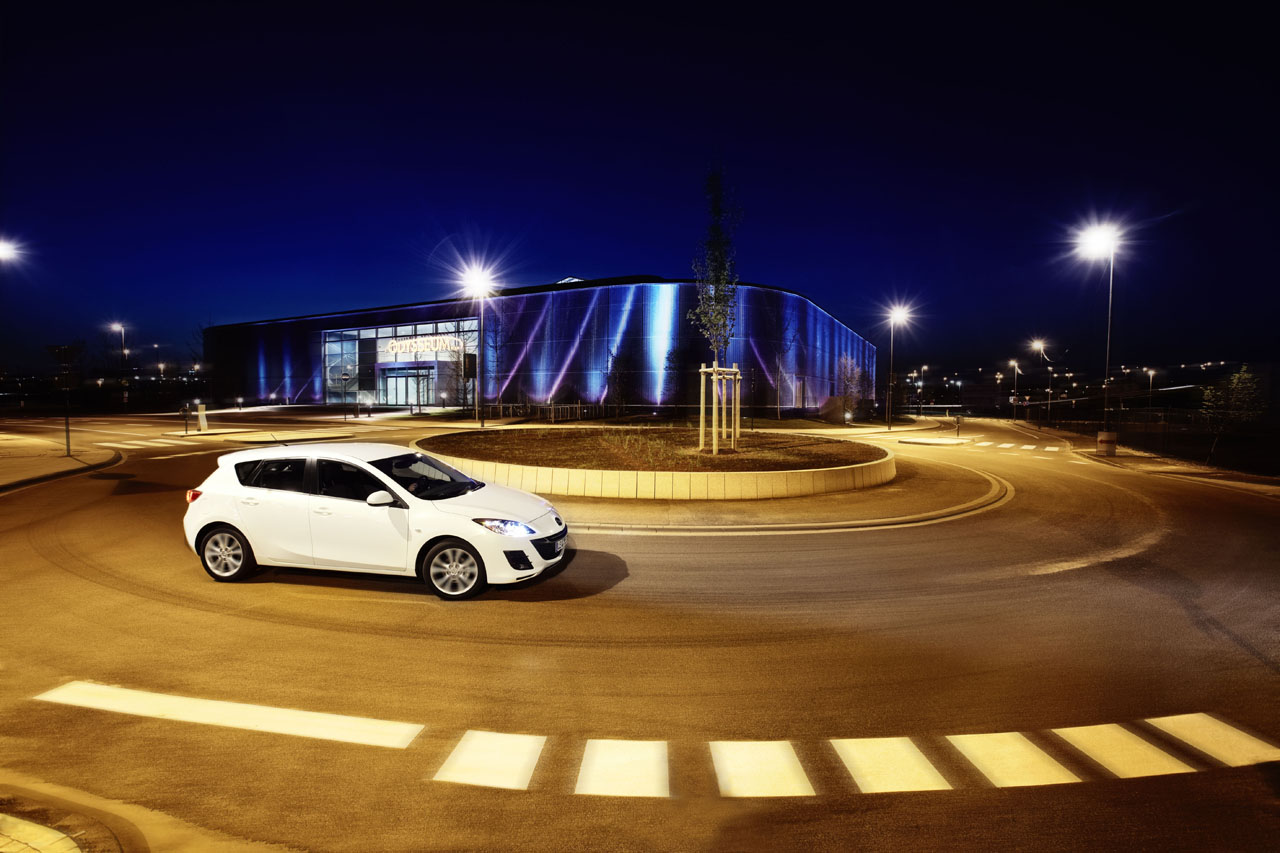Zoom-Zoom has just detailed the i-stop version of the popular Mazda3, a special edition of the car that comes, just as its name suggests, with several enhancements especially aimed at cutting fuel consumption and emissions. Obviously, the main addition is right the i-stop technology, which is actually a start-stop system that automatically idles the engine while the car is not in motion - such as when struck in traffic or at traffic lights.
But what's more interesting is that Mazda says its very own start-stop system is unique as it is the first of its kind to use combustion energy for restart. In other words, i-stop provides a faster response to pedal input and increased saving fuel potential. In case you're wondering, the restart of the engine is done in approximately 0.35 seconds which, according to the Japanese manufacturer, is twice as fast as conventional start-stop systems.
The car is being offered with a 2.0-liter DISI petrol engine with direct injection that generates 151 horsepower at 6,200 rpm and 191 Nm of torque at 4,500 rpm. Mated to a six-speed manual transmission, the engine eats up to 6.8 l/100km (34.6 mpg) and releases 159 grams of CO2 per kilometer.
A thing worth mentioning is that the Mazda3 i-stop features two batteries, one for the general energy supply and the other only for starting the engine. Most functions continue to work even while the engine is turned off by the i-stop system, including illumination, audio systems or other electric features.
In order to further reduce CO2 emissions, the Mazda3 i-stop comes with a new catalyst based on single-nanotechnology. It "embeds the catalytic precious metals directly into the catalyst support matrix," Mazda explained. "This has big advantages over normal catalytic converters: it suppresses thermal degradation caused by precious metal aggregation and it substantially improves the long-term emission treatment performance."
But what's more interesting is that Mazda says its very own start-stop system is unique as it is the first of its kind to use combustion energy for restart. In other words, i-stop provides a faster response to pedal input and increased saving fuel potential. In case you're wondering, the restart of the engine is done in approximately 0.35 seconds which, according to the Japanese manufacturer, is twice as fast as conventional start-stop systems.
The car is being offered with a 2.0-liter DISI petrol engine with direct injection that generates 151 horsepower at 6,200 rpm and 191 Nm of torque at 4,500 rpm. Mated to a six-speed manual transmission, the engine eats up to 6.8 l/100km (34.6 mpg) and releases 159 grams of CO2 per kilometer.
A thing worth mentioning is that the Mazda3 i-stop features two batteries, one for the general energy supply and the other only for starting the engine. Most functions continue to work even while the engine is turned off by the i-stop system, including illumination, audio systems or other electric features.
In order to further reduce CO2 emissions, the Mazda3 i-stop comes with a new catalyst based on single-nanotechnology. It "embeds the catalytic precious metals directly into the catalyst support matrix," Mazda explained. "This has big advantages over normal catalytic converters: it suppresses thermal degradation caused by precious metal aggregation and it substantially improves the long-term emission treatment performance."






























